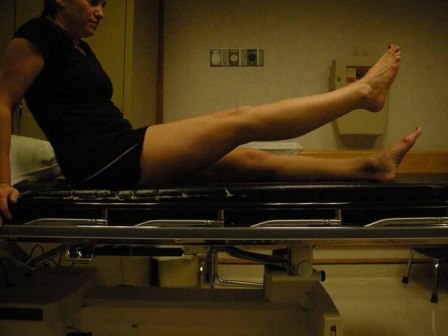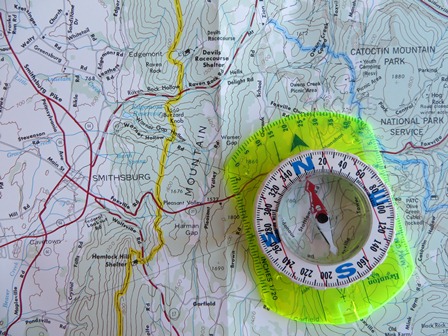DISCLAIMER: I am not a doctor, a physical therapist, or a rocket scientist… and whether I stayed in a Holiday Inn Express last night or not, you should still consult your own doctor for any and all specific advice prior to doing any of the exercises listed here. This post is intended as a “what I did”, not a “You should do” post. Thank you for your understanding. Carry on.As I have mentioned before, I am recovering from a pretty serious knee surgery last fall. Serious in that it left me in a wheelchair for the better part of three months and completely changed life as I know it. Not so serious in that it was a very low-speed, low-risk accident that to this day I am not 100% sure of how it actually happened. I walked away almost immediately and waited another two days before seeing a doctor. Yes, I am a stubborn man. I get it naturally (thank you, dad).To explain quickly, my injury was not directly muscle related. In technical terms, I had a left lateral tibial plateau fracture. That means the outside of my left leg, just below the knee, was shattered. I now have a nice big plate and nine screws permanently holding my bone together. And the surgeon confirmed, regardless of what anyone else says, that these screws will NOT come loose. While it was strictly a bone injury, I was unfortunately non-weight bearing for over twelve weeks, which means I lost nearly all of the major muscles in my left leg. Seriously, it was nasty. I did not take a picture. You can thank me now.My physical therapy started pretty quickly, about three weeks post-surgery, even though I was in a solid knee brace for much longer. Within the confines of this 24-inch brace, I was instructed by my Physical Therapist, Nancy, and her assistant, Jen, on numerous exercises designed to rebuild strength and flexibility in my ever-diminishing leg muscles. I will do my best to describe them for you, as many of them are useful for working out the kinks after a long day of hiking, and some are well suited for prep work, as well.One note to make, though: While I focused on my injured leg, it is important to do all exercises to both sides, to maintain balance throughout your body. If you only do them to one side, you will grow massive muscles on one side and end up walking in circles and people will laugh at you. Probably not that extreme, but you get the picture. And no worries, they will still laugh.Non Weight Bearing ExercisesQuad SetsQuad sets are simple. You place a rolled up towel or foam roll (or the arm rest of your couch, not that I ever did this, Nancy…) under the heel or calf muscle of the affected leg. Then you simply “push down” with your knee, trying to push your knee down while tightening the muscles of your lower thigh (quads). Hold this for a 10-count, then rest for a 5-count. Repeat this 10-20 times, 3-4 times per day.This exercise was one of the first assigned to me, to help with blood flow around my knee and my surgery site, and ultimately, is one that I still do to this day. It is a great “wake up” exercise to do while lying in bed, before starting the day. For my knee, I can really tell the difference when I do not do this in the morning or throughout the day.4-Way Leg Lifts This was another exercise I was able to start doing while still braced up. Actually, I think the brace helped, because I did not have to worry about keeping the knee straight at first – that is what the brace was for!To do leg lifts, you lay on your back, lock your knee straight (or put a long knee brace on…) and lift. Simple as that. Does not have to be real high, just six inches or so. That is “Way #1”. Then you roll 90-degrees so you are lying on your side, and lift your leg up in this direction. Way #3 is to lie on your stomach and lift your leg up (backwards), and #4 is lying on your other side. Hence, 4-Ways.[youtube]http://youtu.be/jgh6sGwtTwk[/youtube]At first, I was told to just lift, and lower. But after a few weeks of this, the “Torture Chamber Maidens” (seriously, these women enjoy creating pain!) made me lift, then hold for a 10 count, and lower. Thankfully, they did lower the repetitions once I started holding. I think I started with a 10-count of lifts per leg, per direction.One variation of this that I started a little later in the process was to “toe out” while doing the lifts, pointing my toe out instead of straight up, because it rotates the leg and focuses on different muscles. And creates different pain.Heel Slides
This was another exercise I was able to start doing while still braced up. Actually, I think the brace helped, because I did not have to worry about keeping the knee straight at first – that is what the brace was for!To do leg lifts, you lay on your back, lock your knee straight (or put a long knee brace on…) and lift. Simple as that. Does not have to be real high, just six inches or so. That is “Way #1”. Then you roll 90-degrees so you are lying on your side, and lift your leg up in this direction. Way #3 is to lie on your stomach and lift your leg up (backwards), and #4 is lying on your other side. Hence, 4-Ways.[youtube]http://youtu.be/jgh6sGwtTwk[/youtube]At first, I was told to just lift, and lower. But after a few weeks of this, the “Torture Chamber Maidens” (seriously, these women enjoy creating pain!) made me lift, then hold for a 10 count, and lower. Thankfully, they did lower the repetitions once I started holding. I think I started with a 10-count of lifts per leg, per direction.One variation of this that I started a little later in the process was to “toe out” while doing the lifts, pointing my toe out instead of straight up, because it rotates the leg and focuses on different muscles. And creates different pain.Heel Slides When I was granted permission to start bending my leg a few weeks after surgery, Nancy added heel slides to my repertoire, and like the quads, this is one I still do almost every morning just to get the blood flowing and the knee moving. This is a great loosening method, at least for me, because it does not force the knee to bend, but rather puts the leg in a position that uses natural body weight to bend it.Heel slides are just that – lay on your back, legs extended, and lift your knee using your thigh muscles instead of knee muscles, letting your heel slide up. The tricky part was getting the heel to slide back down without putting any pressure up the leg – an action that could have disrupted the internal healing process. I started with 3 sets of 10 repetitions with a break between sets, but was eventually increased up to 4 sets of 20.[youtube]http://youtu.be/_jvUnWbBPXc[/youtube]Standing 4-Ways with Resistance BandsSimilar to the regular 4-Way Leg Lifts, standing 4-Ways was a way to increase the resistance by using resistance bands. Tying a big colorful rubber band around your leg is apparently a favorite pastime of physical therapists, but it was worthwhile in building muscle back.Standing 4-Ways are done by looping one end of a resistance band around your upper thigh (to avoid straining the knee) and the other end around a door knob, tree or car handle. Then perform the 4-Ways, rotating around so that you are always “lifting” 90-degrees from your anchor point. Use a chair or something else to help balance.An added bonus of the standing aspect is that you are building strength and balance in your standing leg. When I was allowed to start weight-bearing on my left leg, I did these to both legs, as it helped to stand on the bad leg while doing exercises.To Be Continued… I meant for this to be one big post, but realized that the Weight Bearing portion is nearly twice as long as what I have already written here, so I think it best to break it into two posts. The remainder of this will post next week. Thanks for your support, and remember to “Spin the Compass.”
When I was granted permission to start bending my leg a few weeks after surgery, Nancy added heel slides to my repertoire, and like the quads, this is one I still do almost every morning just to get the blood flowing and the knee moving. This is a great loosening method, at least for me, because it does not force the knee to bend, but rather puts the leg in a position that uses natural body weight to bend it.Heel slides are just that – lay on your back, legs extended, and lift your knee using your thigh muscles instead of knee muscles, letting your heel slide up. The tricky part was getting the heel to slide back down without putting any pressure up the leg – an action that could have disrupted the internal healing process. I started with 3 sets of 10 repetitions with a break between sets, but was eventually increased up to 4 sets of 20.[youtube]http://youtu.be/_jvUnWbBPXc[/youtube]Standing 4-Ways with Resistance BandsSimilar to the regular 4-Way Leg Lifts, standing 4-Ways was a way to increase the resistance by using resistance bands. Tying a big colorful rubber band around your leg is apparently a favorite pastime of physical therapists, but it was worthwhile in building muscle back.Standing 4-Ways are done by looping one end of a resistance band around your upper thigh (to avoid straining the knee) and the other end around a door knob, tree or car handle. Then perform the 4-Ways, rotating around so that you are always “lifting” 90-degrees from your anchor point. Use a chair or something else to help balance.An added bonus of the standing aspect is that you are building strength and balance in your standing leg. When I was allowed to start weight-bearing on my left leg, I did these to both legs, as it helped to stand on the bad leg while doing exercises.To Be Continued… I meant for this to be one big post, but realized that the Weight Bearing portion is nearly twice as long as what I have already written here, so I think it best to break it into two posts. The remainder of this will post next week. Thanks for your support, and remember to “Spin the Compass.”
Rehabbing My Knee, Part 1
Rehabbing My Knee, Part 2
